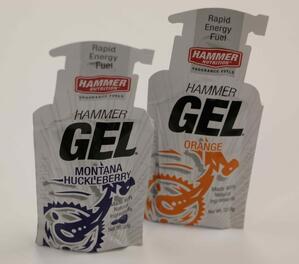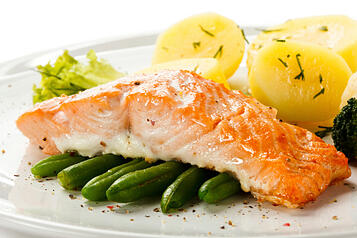 If you’re like me, cabin fever is already starting to set in, and we are barely into the winter season. This is the time of year that I start to think about what races I want to focus in on for the upcoming year. I find it a great way to stay motivated and focused on my training when it’s not my favorite time of year to train.
If you’re like me, cabin fever is already starting to set in, and we are barely into the winter season. This is the time of year that I start to think about what races I want to focus in on for the upcoming year. I find it a great way to stay motivated and focused on my training when it’s not my favorite time of year to train.
I always consider three main questions before I pull the trigger and sign up for my first “big” race, and plan out my training program accordingly. Evaluating these things has helped me to create realistic and attainable race goals for the upcoming season, and I hope that it can do the same for you.
1. How is my year looking?
There are years where training for races can be a top priority, and others where it may be secondary or on down the line depending on what else is going on. I try to think forward and determine how much time I can and want to realistically dedicate to race training with everything else that is going on in my life. Some things to consider when thinking about this include your work schedule, vacation schedules, interest in other hobbies, taking classes, and family obligations, among many other things. Knowing these things and thinking about them as they relate to training can help you get a grasp on what you can fully commit to. Obviously, sometimes other things come up, so always know it is okay to deviate from the plan when life happens.
2. Where is my fitness today?
A late fall or holiday race can be a great reality check for how you are doing with your training currently. Even if you are a little rusty, doing a race around this time of year will really tell you where you are at (whether you like it or not). If you have stayed in stride and had a great fall season, maybe it is time to consider pushing yourself a bit harder this spring by trying to go faster in your next 5K or racing a longer distance. Knowing where you are at in your training today will help you make a realistic goal for next year.
3. Was I healthy this year?
This may be the best question you ask yourself. Racing is a great way to accomplish a personal goal or get in touch with your competitive side. It is easy to get so caught up in a race goal that you neglect to take care of yourself and your health suffers. Looking back over the last year and thinking about any injuries or other health issues that may have been an effect of your training can help you to make an educated goal for the next year. Maybe you were injured because you did not have time to train correctly for that marathon, or you had a terrible diet because you spent so much time training that you ate anything that was convenient and easy to get your hands on. Maybe you are currently injured and will have to start back into racing a bit more slowly than normal. These are just a few examples of how training can negatively impact your health, but I suggest considering these things when planning for your upcoming race season.
***
Setting a goal now is a great way to get your year started off right and help get you through the winter training months with a realistic focus and plan. Whether you are thinking of completing your first race, training for the same race you run each year, or looking for new racing opportunities, setting a realistic and attainable race goal with an appropriate training plan is the key to success.
This blog was written by Stephanie Kaiser, Fitness Center Manager. To find out more about the NIFS bloggers, click here.


 So you have the running bug! You have now completed a few 5K races after years of debating whether you would even be able to finish one, and now you want to run faster. Congratulations on being one of over 8 million people to complete a 5K last year!
So you have the running bug! You have now completed a few 5K races after years of debating whether you would even be able to finish one, and now you want to run faster. Congratulations on being one of over 8 million people to complete a 5K last year!

 If you are like the majority of Americans, your work is strongly reliant on the use of computers, smartphones, webinars, and other electronic devices and digital technology. Along with this, the use of social media, text messaging, and email to interact with our friends and family is also at an all-time high—not to mention the number of hours spent in front of a television. With the combination of these things, the need to unplug from our technology has never been greater.
If you are like the majority of Americans, your work is strongly reliant on the use of computers, smartphones, webinars, and other electronic devices and digital technology. Along with this, the use of social media, text messaging, and email to interact with our friends and family is also at an all-time high—not to mention the number of hours spent in front of a television. With the combination of these things, the need to unplug from our technology has never been greater. If you are a solo runner or walker, it is likely because you enjoy having that outlet in your day to just be with your thoughts, relieve stress and clear your head. This is a great way to accomplish all of these things, but if you are looking to make some greater strides in your race efforts this year, you may want to consider adding in a few training sessions each week with other people. This will allow you to step out of your comfort zone and push yourself harder than you would when you are training on your own. Along with this, there are many additional benefits that can be accomplished when training with a group. So why should you consider training with others?
If you are a solo runner or walker, it is likely because you enjoy having that outlet in your day to just be with your thoughts, relieve stress and clear your head. This is a great way to accomplish all of these things, but if you are looking to make some greater strides in your race efforts this year, you may want to consider adding in a few training sessions each week with other people. This will allow you to step out of your comfort zone and push yourself harder than you would when you are training on your own. Along with this, there are many additional benefits that can be accomplished when training with a group. So why should you consider training with others?



 Over the past decade, there has been an increase in the popularity of barefoot training or training in a minimalist shoe such as a
Over the past decade, there has been an increase in the popularity of barefoot training or training in a minimalist shoe such as a 
 triathlon. When you finished your first race and looked at the breakdown of the times for each event, you probably noticed the T1 and T2 times. T1 is the time it took you to go from swimming to the bike, and T2 is the time it took you to go from the bike to the run. Like the swimming, biking, and running training, the transitions should be trained as well. But don’t think you need to spend hours perfecting getting from one event to the next. A good transition can simply be added to the other brick training sessions.
triathlon. When you finished your first race and looked at the breakdown of the times for each event, you probably noticed the T1 and T2 times. T1 is the time it took you to go from swimming to the bike, and T2 is the time it took you to go from the bike to the run. Like the swimming, biking, and running training, the transitions should be trained as well. But don’t think you need to spend hours perfecting getting from one event to the next. A good transition can simply be added to the other brick training sessions.

 Runners are generally good at doing the same thing over and over again, day in and day out: RUNNING! Oftentimes they will neglect doing some of the components of what runners refer to as “the little things” that pay huge dividends in overall performance and how you feel while running. The little things include sleeping enough, eating right, staying hydrated, maintaining flexibility, and core strength, and the list goes on. When there is limited time in the day to get in a quality run, the thought of cutting a run one or two miles short to do core and flexibility work is often quickly neglected.
Runners are generally good at doing the same thing over and over again, day in and day out: RUNNING! Oftentimes they will neglect doing some of the components of what runners refer to as “the little things” that pay huge dividends in overall performance and how you feel while running. The little things include sleeping enough, eating right, staying hydrated, maintaining flexibility, and core strength, and the list goes on. When there is limited time in the day to get in a quality run, the thought of cutting a run one or two miles short to do core and flexibility work is often quickly neglected.









 If you said yes to all of these questions, it is pretty safe to say you are ready to get started on a marathon training program! If you answered a few with “no,” no worries. A marathon is still not too far out of reach. Just address the obstacles that you have and work toward resolving those!
If you said yes to all of these questions, it is pretty safe to say you are ready to get started on a marathon training program! If you answered a few with “no,” no worries. A marathon is still not too far out of reach. Just address the obstacles that you have and work toward resolving those!